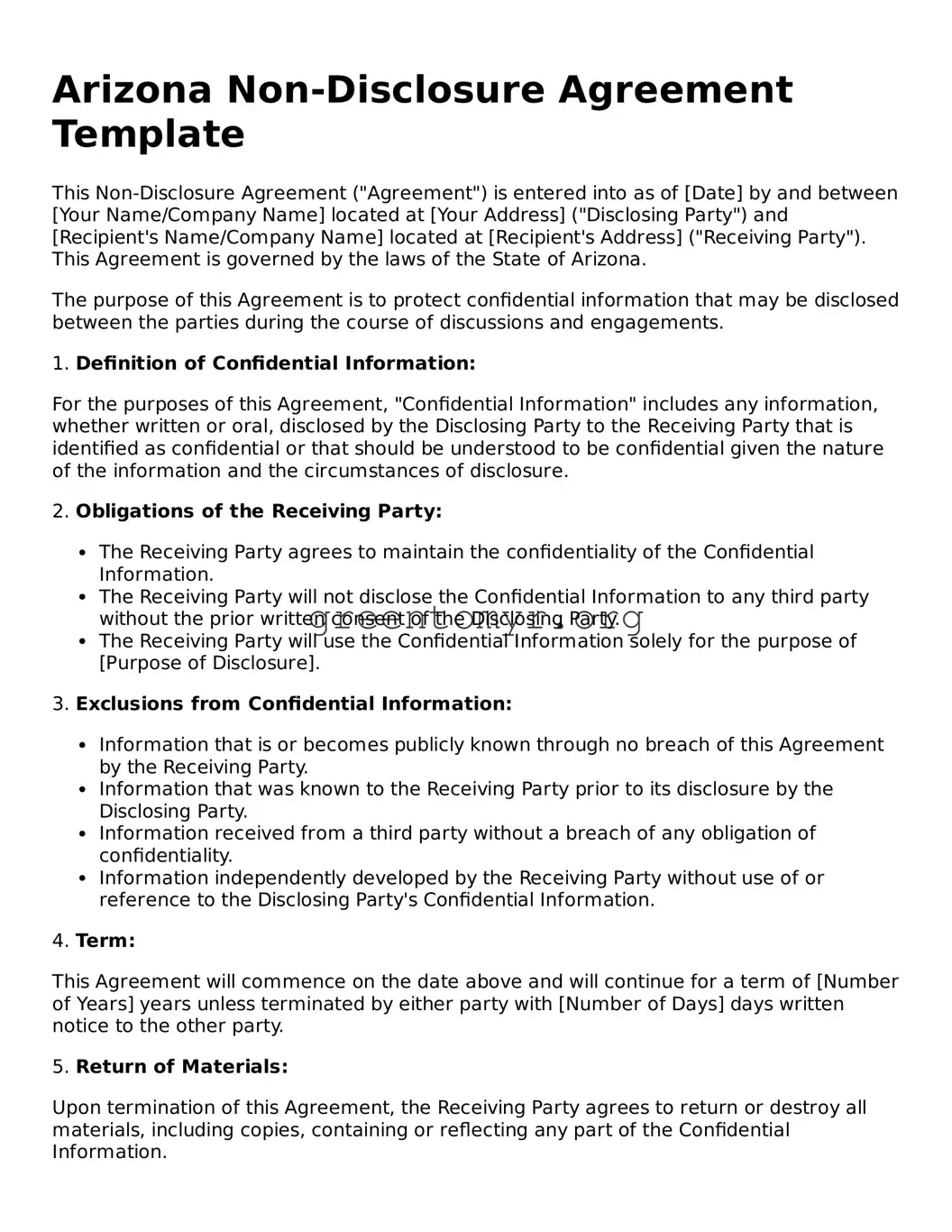Arizona Non-Disclosure Agreement Template
This Non-Disclosure Agreement ("Agreement") is entered into as of [Date] by and between [Your Name/Company Name] located at [Your Address] ("Disclosing Party") and [Recipient's Name/Company Name] located at [Recipient's Address] ("Receiving Party"). This Agreement is governed by the laws of the State of Arizona.
The purpose of this Agreement is to protect confidential information that may be disclosed between the parties during the course of discussions and engagements.
1. Definition of Confidential Information:
For the purposes of this Agreement, "Confidential Information" includes any information, whether written or oral, disclosed by the Disclosing Party to the Receiving Party that is identified as confidential or that should be understood to be confidential given the nature of the information and the circumstances of disclosure.
2. Obligations of the Receiving Party:
- The Receiving Party agrees to maintain the confidentiality of the Confidential Information.
- The Receiving Party will not disclose the Confidential Information to any third party without the prior written consent of the Disclosing Party.
- The Receiving Party will use the Confidential Information solely for the purpose of [Purpose of Disclosure].
3. Exclusions from Confidential Information:
- Information that is or becomes publicly known through no breach of this Agreement by the Receiving Party.
- Information that was known to the Receiving Party prior to its disclosure by the Disclosing Party.
- Information received from a third party without a breach of any obligation of confidentiality.
- Information independently developed by the Receiving Party without use of or reference to the Disclosing Party's Confidential Information.
4. Term:
This Agreement will commence on the date above and will continue for a term of [Number of Years] years unless terminated by either party with [Number of Days] days written notice to the other party.
5. Return of Materials:
Upon termination of this Agreement, the Receiving Party agrees to return or destroy all materials, including copies, containing or reflecting any part of the Confidential Information.
6. Governing Law:
This Agreement will be governed by and construed in accordance with the laws of the State of Arizona.
7. Entire Agreement:
This Agreement constitutes the entire understanding between the parties regarding the subject matter hereof and supersedes all prior discussions, agreements, or understandings of any kind.
IN WITNESS WHEREOF, the parties have executed this Non-Disclosure Agreement as of the date first above written.
Disclosing Party:
Signature: ___________________________
Name: [Your Name]
Title: [Your Title]
Receiving Party:
Signature: ___________________________
Name: [Recipient's Name]
Title: [Recipient's Title]
